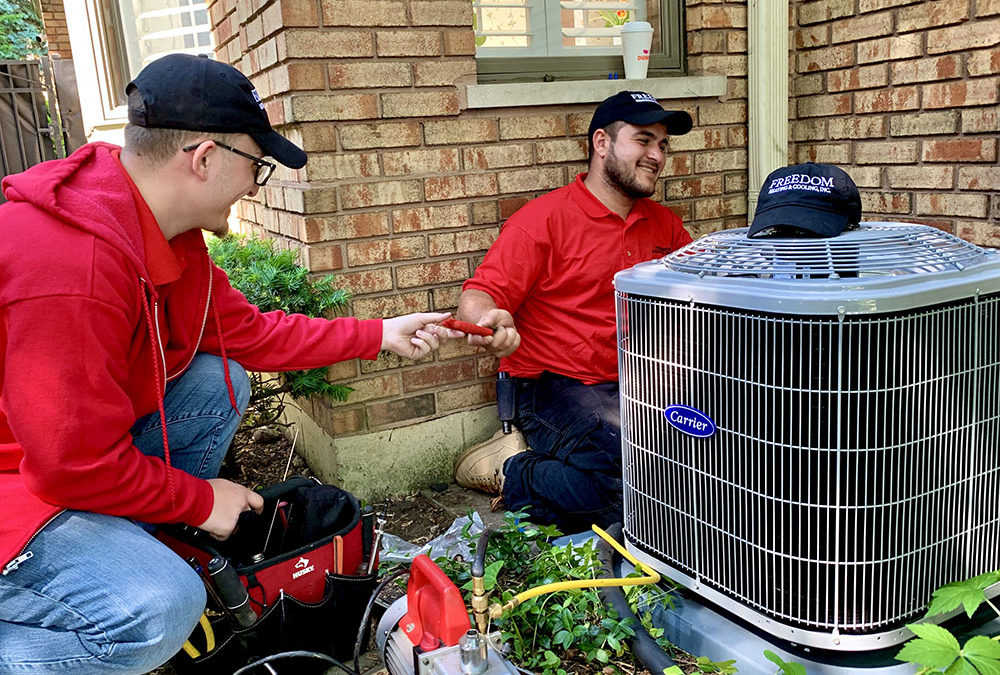My Furnace & Air Conditioner Purchase.
- Get the Right Size System – If a company comes out to give you an estimate on a new system but doesn’t take the right measurements, how do they know they are installing the right size system for you? If a company comes out to your home and sees that your current system is a 3 ton 60,000 btu split system, and they just want to throw another one in that’s the same size, without measuring your actual conditioned square footage, taking consideration for your window infiltration, attic insulation levels, the orientation of the home, and other influences like shade trees that may have recently been removed, I would see that as a red flag.
- Buy the Right Technology for your Situation – There are three types of technology when it comes to how an HVAC system works. Single-stage, Two-Stage, and Variable Speed technology. Which one is right for your home? Discuss this with your technician. If you tell them what you want, and they tell you what they offer, you two will come up with the right system for your home. The point is, don’t let someone tell you which technology you need to get. If you aren’t involved in the process, that’s a red flag.
- Choose the Right Brand of Air Conditioning System for Your Home. Some brands have bad reputations because they are the cheapest brands that homebuilders can find. They find these cheap brands so they can win the bidding process for the job. So, now that there are a bunch of these same less expensive systems in the neighborhood when they all start breaking down, they maintain the brand’s bad reputation. On the other hand, the most costly systems may not be right for your rental or vacation home. Just make sure you’re clued in to any salesmen trying to sell you the most expensive equipment out there. That’s a red flag for me.
- Choose the Right Contractor to Install Your New System – Not even the most expensive system in the industry will work right for you if it’s not installed correctly. Manufacturers build the equipment, and contractors install the equipment. If your contractor just throws your new system in and doesn’t consider the finer points of installation practices, you’ll suffer in the long run, which brings me to my next point.
- Check References and Reviews – If your contractor doesn’t have any reviews online, that’s a big red flag. They may not be licensed. They may not even be a real business. Sure, you can have some guy who drives around in a pickup truck put your new HVAC system in, but what happens when you need that person to service your equipment if it breaks down? You may never see that guy again! That’s why if he doesn’t have any reviews online, that’s a red flag.
- Using the Big Companies in Town – If the company you choose has 50 to 150 employees or more, you might be paying too much for your system. Who’s going to pay for all of those $100,000 salaries for the managers of those businesses and all those fancy TV ads and billboards!? You are.That’s why going with the big guys in town is a red flag to me, too. Find out more about the company you are considering by asking how many employees they have and if they are family owned!
- Licensing, Bonding, Insurance, and Sales Agreements – I think it’s fair to ask your potential contractor if they are adequately insured. What happens if they install it unsafely and the condensate drainage backs up, causing water damage to your ceiling? It’s a huge red flag if your contractor doesn’t have the proper insurance to cover your home in case of installer error.
- Contracts Should be in Place – I also think it’s a red flag if your potential contractor doesn’t have you sign an official contract. Does your contractor have a business attorney? That’s something you might want to consider. Legitimate businesses do things the right way and don’t cut corners administratively.
- Maintenance Plans – Some companies want to throw your system in, take your money, never to be seen again. I would like someone to take care of my system after the installation. Modern high-efficiency systems need a little more care than earlier systems. That’s why having a maintenance agreement in place with your installer is a solid plan. If they don’t offer you something like that, I would see that as a red flag.
- Warranties on New HVAC Systems – New systems come with a five to ten year parts warranty. That means if any part of the system breaks down within the first ten years, you won’t have to pay for the part itself. You will, however, have to pay for the labor for the contractor to do that work for you. Pay close attention to the labor warranty on your new install. A measly one year labor warranty isn’t offering much because new systems don’t usually break within the first year. It’s usually three, seven, ten years down the road. If your labor warranty isn’t offered to be extended to five or ten years, assuming you let them do the required maintenance on the system, I would consider that a red flag.
The Freedom Family has been in the HVAC industry for a long time. We think it’s important to share with you the 10 red flags when buying a new HVAC system. Hopefully, you’ll consider these bits of information, and it helps you with some questions you have when buying your next HVAC system.


